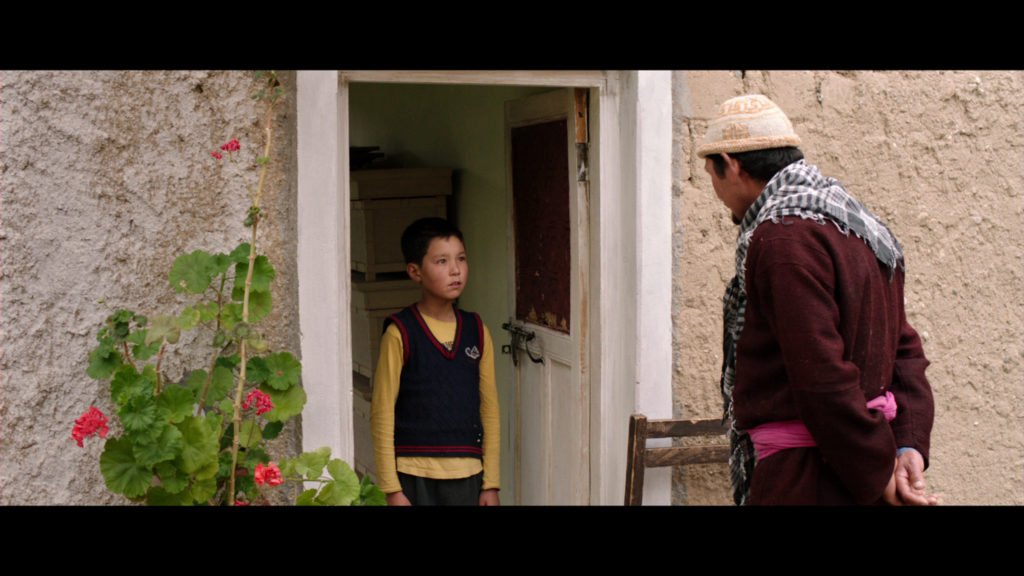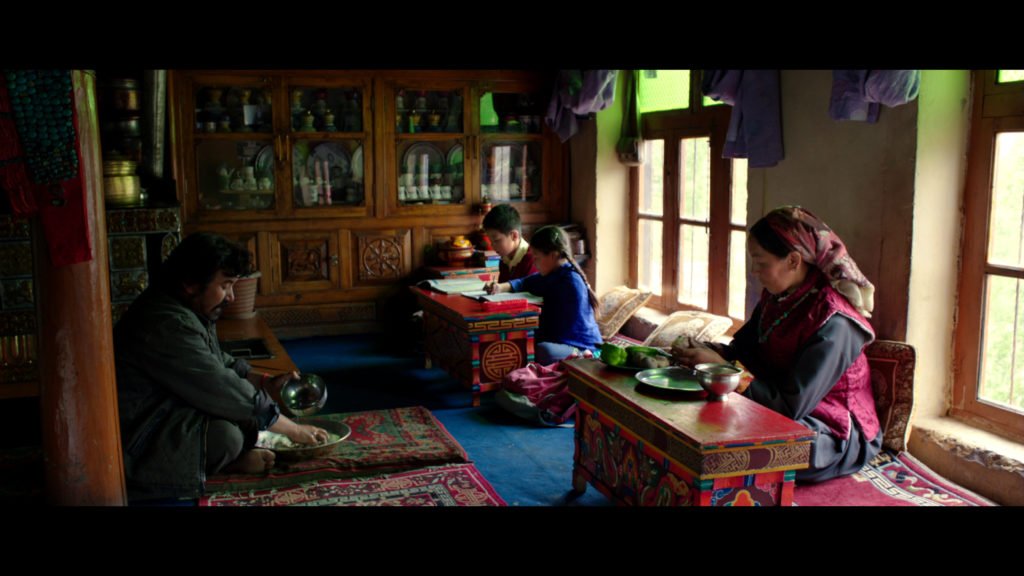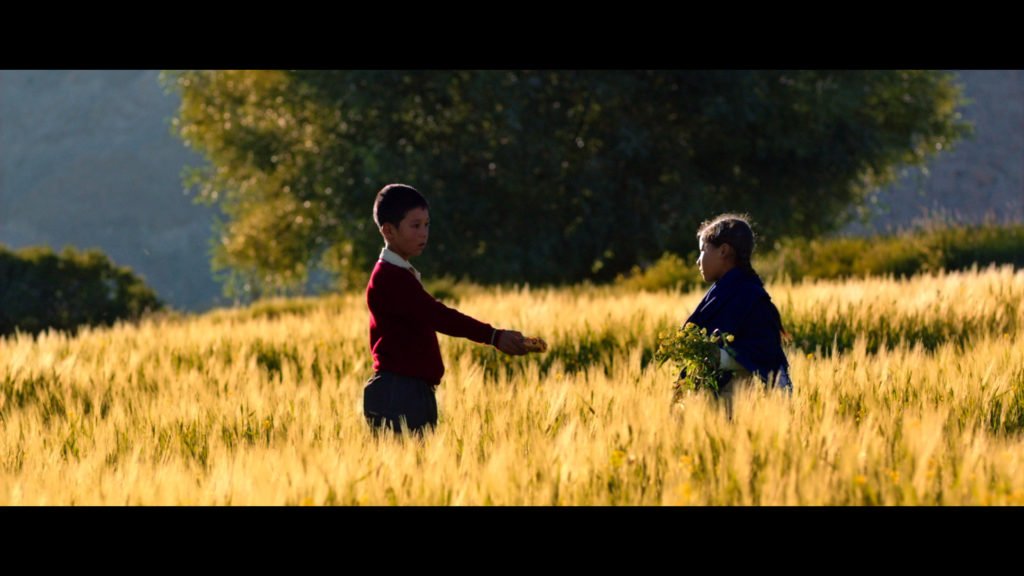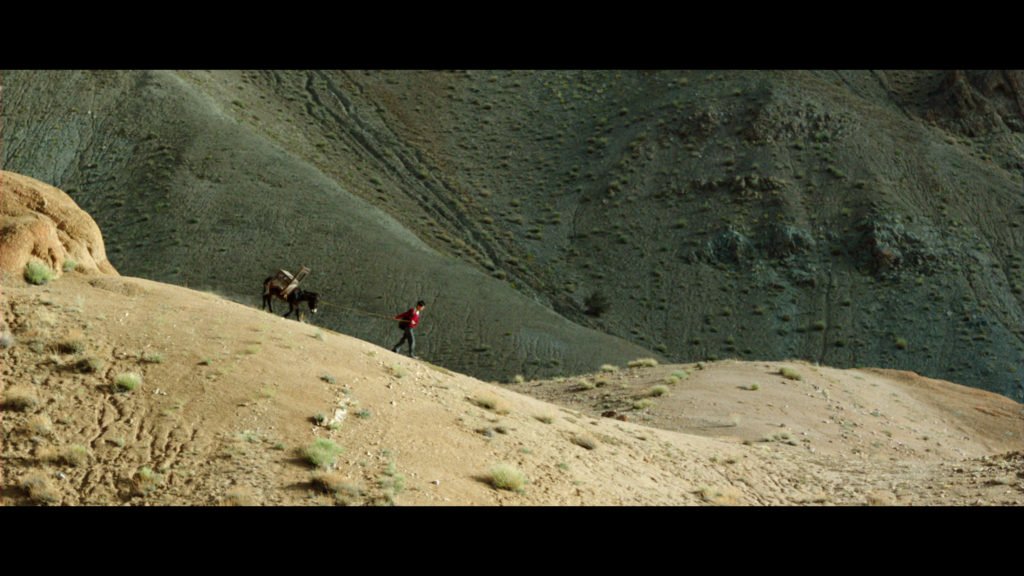Lynsey Ford talks to writer and director Praveen Morchale about his origins and inspirations for his upcoming film Walking with the Wind.

Praveen Morchhale | © Praveen Morchhale
Walking with the Wind charts the moving story of a 10 year old boy’s spiritual journey across the fragile landscape of The Himalayas. The film has received plaudits on the International Film Festival circuit, from India to Eastern Europe, winning top prize at Rome’s Tertio Millennio Film Festival in 2017, and three National Film Awards– for Best film in Ladakhi, Best Sound Design (Sanal George) and Best Sound Mixing (Justin K Jose).
Here, director and screenwriter Praveen Morchhale talks to Lynsey Ford about his steady transition to the silver screen.
Could you discuss your early cinematic experiences, and the day you decided film was your chosen career path?
Cinema mirrors real life for Indian film makers as well as for their audiences. It allows one to dream and drift into another dimension.
I’ve always been fascinated by the reactions of cinema audiences, and the impact film has on people’s lives and their emotions. I was involved in theatre for many years with Kala Niketan, a theatre group and it was during this period that my interest in cinema began. Observing everyday people and their lives whilst travelling generated many stories in my mind. At college in Indore, Central India, it was always my desire to tell stories through film. I really had no particular role model but I started liking serious artistic films based on biopics telecasted on TV. That was the reason I started making films which are close to the issues of everyday lives unlike ‘mainstream’ Indian films. I am not a regular cinema goer, therefore my cinematic experience and inspiration is taken more from the stories of real everyday lives. I believe I am a story teller, so that was my decision to became a filmmaker, and I continue to communicate with audiences through film.
Can you discuss what inspired you to write and produce Walking with the Wind?
I draw from my observations of everyday life, watching how simple people lead their different lives, how they handle their daily routine and aspirations honestly, and this forms the basis of my ideas and stories. An idea comes from my interpretation of events. Unfortunately, it has become a normal way of life for people to never learn from their mistakes, feeling the need to place the blame others, without fixing their own problems. I thought, what if a boy tries to rectify his mistakes quietly; what would be his experience when dealing with elders who are too absorbed in their own lives? The rest of the elements came together gradually during shooting, once the location was chosen and I had the opportunity to meet with locals. Luckily, I found a passionate producer in Mr. Mahesh Mohan who was looking for interesting stories to produce. Once he liked the idea of Walking With The Wind, we were on board, and it was really a great experience making the film.

Walking with the Wind | © Praveen Morchhale
Who do you gain inspiration from as a Director/Screenwriter/Producer?
Once I have found the location, and been given the opportunity to meet and experience different people and their culture, writing becomes the easiest and quickest part for me chronicling their life and struggles. I create characters when I interact with real people. My scripts are usually completed within a week. I shoot after the first draft. It gives actors a lot of opportunity and flexibility to improvise whilst shooting, be it in the scenes or through the dialogue. I just try to capture their truth and reality through my stories with minimum interference behind the lens.
Please can you tell me about your theatrical background, and why you made the transition to film.
My transition from theatre to cinema drew on my need to express stories in a different way. I was involved in theatre in Central India since my days at school in small dusty town Timarni and it grew into passion later at college in the large city of Indore, and after I graduated. I find theatre to be equally as challenging as cinema. I identify with reality and realism, which has drawn me towards cinema. For me, the narrative, people and the choice of landscape, are closely intertwined with one another. Cinema gives me the opportunity and freedom to weave and express my story in the best minimalist way. Without the right landscape, my subtle, gentle and poetic stories with non-actors would lose their power and impact.
Your first feature had the distinction of being the first publicly funded Indian feature film. Could you talk about your feelings towards this?
It was the first film in India which got released through public funding, raised by 235 backers across 45 countries. Barefoot To Goa is very close to me. It was both an emotional journey for me as well as a great learning curve, as I am not a trained filmmaker and I have never worked with, or assisted, any filmmaker. Whatever we tried was a new experience to me, I had no inhibitions and we had no particular point of reference or any specific target. All my films are made this way. I will not consider anything except a simple method where I can express a story.
Followers, supporters and cinema lovers helped me to produce the film, and we reached individuals through social media. We allowed them to share in the glory, to own the film and experience the emotion of getting Barefoot To Goa available to a wider audience, and the film was fully embraced. I will always remain thankful to our backers and supporters who started my journey into cinema. We called all supporters a Proud Funder and I really feel proud that they helped the film as it would have been impossible to release such a small film through Indian theatres.
Children are the protagonists in your work as seen in your first feature Barefoot to Goa, set in Mumbai. What do children bring to the heart of the story?
It’s true that children express the emotions in the purest possible way. Their honesty and innocence, shows society and family from a young, fresh perspective, making my films much more effective and stronger when communicating it to an adult audience. Children bring the heart and soul to all of my films. The subjects I express, are aimed more towards adults, but at the same time children can also learn life lessons. My films do not preach; they are observational without being judgmental. There may be differences in cultures or languages but we all have the same universal common traits, connecting all of us together. We take from cinema our own understanding and experience of life and our surroundings. This makes cinema extremely interesting and I believe cinema must give that freedom to audiences and children in my film make that freedom much easier for audiences and for me.

Walking with the Wind | © Praveen Morchhale
The fixing of the broken chair in Walking with the Wind and 10-year-old Tsering’s attempt to conquer his fears across the Himalayas indicate his transition into the adult world as a mature and responsible individual. What are your opinion about the spiritual meaning of the story?
Cinema should give us an opportunity to find meaning and feeling, influencing own belief systems, our understanding, and awareness. Adult audiences may take the chair as a metaphor for a broken relationship, a not-so-perfect democracy or just a social burden one has to shoulder.
It is my personal belief that it represents a spiritual journey, awakening our own social conscience and desire to live a better life, beyond just the need to acquire worldly possessions.
How did you find the lead actor for Walking with the Wind? What quality does he bring to the film?
It takes more than luck to find the perfect leads. It is essential to find someone who can convey truth in expression rather than words. It was my decision to choose for the role of 10-year-old Tsering, which led me to visit many schools and villages. In Ladakh where we shot the film, we have 30 villages scattered in mountains spreading over a 200 to 300-kilometer distance. In one village, I found a few small girls playing in severe winter temperatures; around minus 12 D Celsius. I asked them if there were any boys in the village. One girl pointed that her brother was at home, I invited him out and he began interacting with me. I just asked him to pick a piece of rock lying around and it must be around 15 kgs and I observed his expression whilst he tried to pick it in his arms. I really liked his eyes and the way he looked at me with his studious and knowing gaze. I liked his simplicity.
He made the film special, very real and believable. During the shooting, he was most sincere, and very intuitive. I am always lucky to get child actors who make the filming process very special, loving, and meaningful. I often find that they outperform everyone else.

Walking with the Wind | © Praveen Morchhale
Discuss your collaboration with Iranian cinematographer, Mohammad Reza Jahanpanah.
Mr. Mohamad Reza Jahanpanah, who hails from Iran, brought the soul to the film through his magical lens, capturing the beauty and serenity of the Himalayan landscape. I firmly believe, that the cinematography captured by Mr Reza added a lot to the film. I liked his meaningful composition and his way of capturing the essence of scenes.
Our association first began when I watched a film shot directed by Mr. Reza at Mumbai Film Festival and I really liked one specific long shot taken by Mohammad for the film “Risk of Acid Rain”. I was inspired to shoot my film in the same style with similar aesthetics. I found his contacts and wrote him an email. Within seven days we were working together on Walking with the Wind.
We discussed very little about the scenes but we both thought about the film and scenes in exactly same way which has helped a lot to shape the film in a particular poetic form.
If we closely observe the Indian and Iranian culture, we can see lot similarities between India and Iran. We have similar tastes in music, and appreciation and mastery of traditional musical instruments, sharing many common words in our vocabulary, good taste in food, and a shared outlook on social behaviour. Working with Mr. Reza was such a smooth transition, and I have many wonderful memories. He has a calm demeanor, and adapted well to both the living and working conditions on set. A gentleman to the core, he was respected and liked by each and every one of the crew.
Could you discuss the importance of location in Walking with the Wind, and the response and interaction of the local community during location shoots. Can you discuss your challenging trip across 30 villages in extreme weather?
Location is a key, integral part of the narrative, and I strongly believe each story has a specific visual and back ground demand, with which audience can connect, which can add in characters and story. When you find that the people who are living in such a location are kind hearted and generous, you as a filmmaker don’t desire anything else. It was a total pleasure making the film, a valuable learning experience spending time in the village and filming with locals of that remote world. They were the happiest people I’ve ever met in my life though they all experience difficulties living in such tough terrain. The locals were always smiling and hospitable, softly spoken, generous and very helpful.
To find this village whilst travelling a wide distance in minus 12-degree temperatures, was a dream. I had never travelled through such tough terrain and extreme weather conditions. I was travelling day and night from one village to another to find the one which I had in my mind over a week. When I saw Yanthang village, I instinctively thought “This is it”. The village has such a distinctive, magical aura.

Walking with the Wind | © Praveen Morchhale
Your work has won plaudits in India, Brazil, Rome and Poland. Please can you discuss your experiences and conversations with your peers and audience across the film festival circuit. Can you talk about your recent experiences in Switzerland?
I enjoy meeting and hearing from different audiences with very unique perspectives and views about the storyline. I learn a lot from these experiences. The first public screening was at Mumbai Film Festival in October 2017, with the film going in competition at Sao Paulo International Film Festival in Brazil, and Camerimage, Poland a month later in November 2017. I think audiences are much smarter than the filmmaker. When I heard audience members talking and discussing Walking With The Wind after the screening, I felt the love they had towards it as if they recognized their own personal journey, and that feeling cannot be put into words. There was one experience I had after the screening of the film at the 4th screening of The Fribourg International Film Festival in March 2018.
One gentleman raised his hand to ask a question. He simply said. “I wish this film would never end”. I appreciated that, and I said “I’m glad you love it, that’s what I like to hear, but I fear others may be sleeping!”
It was his joy, and his experience of becoming immersed in the film, that made him declare that he ‘never wanted it to end’. For me it was the ultimate accolade and compliment.
From all your skills as a film maker, which is the most rewarding? Describe a day in the life of your work as a filmmaker.
I enjoy developing my imagination, capturing suitable images and scenes, when we shoot and edit. We worked very fast and completed production within a 18-20 day period. I am clear in what I really want to shoot. I never shoot anything extra that I think will need editing. The rest of the time when I am not making a film, I anticipate working on the next film. I am working on a new contemporary film based on true stories about women’s rights and their struggle for recognition in Indian society.
What advice would you give to new filmmakers hoping to break into feature films?
I feel I’m not able to offer advice to aspiring filmmakers. One has to find one’s own way. Everyone has a distinct style, a way of storytelling, and expressing emotion. We need to encourage diversity through storytelling. The World needs more films to heal wounds during tough times and the uncertainty that we are all experiencing across the world. Cinema unites us. We need to share stories of people who would otherwise have no voice to express themselves living and working in a difficult environment.
Walking with the Wind is due for theatrical release in July 2018.
© Lynsey Ford | 2018


